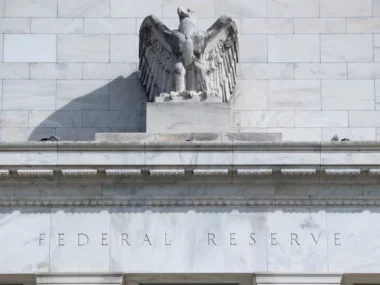2023 has witnessed a few instances of misleading signs for the UK economy. The upcoming data in the following weeks will be of utmost importance.
A recession has been successfully avoided, but the growth of the UK economy has remained sluggish.
While inflation has decreased from the double-digit levels observed a year ago, it has proven to be more persistent and has extended into the service sector.
The recent significant revision of historical growth data by the Office for National Statistics (ONS) has altered the perspective on the post-pandemic recovery, particularly when compared to other European nations.
However, a more comprehensive evaluation of the UK’s economic outlook may need to wait for forthcoming data in the upcoming weeks.
The data set to be released in September could provide insight into whether the challenges of the past three years are gradually receding.
Expectations within the government suggest that the economic situation may remain uncertain for the next few weeks. Unemployment figures, to be released on Tuesday, might see a slight uptick. Nevertheless, there is hope that the UK will soon experience a scenario where earnings outpace the cost of living.
The Gross Domestic Product (GDP) may have contracted slightly in July, and this will be revealed on Wednesday.
Rising fuel costs in August are likely to contribute to an uptick in the latest inflation figures, which will be disclosed the following Wednesday. Both Chancellor Jeremy Hunt and Bank of England governor Andrew Bailey anticipate this.
All of these factors will influence the Bank of England’s decision on interest rates in the next two weeks. While a rate hike was anticipated, recent indications suggest the Bank may opt to maintain current rates for a longer period.
Simultaneously, the Office for Budget Responsibility (OBR) is incorporating the latest data into its forecasts, set to be published in November alongside the Autumn Statement.
On the surface, higher wages are bolstering tax revenue, resulting in lower-than-anticipated borrowing figures for this year. However, the projections also show an increase in deficits. In March’s budget forecast, the peak in Bank of England rates was expected to be 4.3%, but it has already reached 5.25%. Ten-year UK borrowing rates, initially projected to average 3.6% in March, rose to 4.8% last month. The OBR previously noted that a one-percentage-point rise in borrowing costs would increase borrowing by £20 billion in 2027-28, erasing fiscal headroom.
When the OBR highlights that the Treasury is not on track to meet its self-imposed borrowing constraints, it may lead to pressure for tax hikes or spending cuts.
Currently, the political discourse centers around the opposite approach, discussing pre-election tax reductions or increased spending on initiatives like school repairs.
For the Chancellor, this autumn offers the opportunity to stabilize the UK on a steady economic course. While it may not be a spectacular turnaround, it marks a significant departure from the previous year’s challenges under his predecessor.
Inflation is expected to continue decreasing, reaching 3% within a year. The UK is poised to maintain a respectable position in terms of economic growth among the major G7 economies.
The Treasury’s primary medium-term policy focus will be addressing the UK’s relatively poor track record in business investment. The Budget included a set of measures to alleviate labor supply issues, and the Autumn Statement is expected to tackle this challenge. The Treasury believes it contributes to a quarter of the UK’s productivity gap compared to other major economies. If the UK matched the productivity of nations like Germany, it could lead to a £6,000 increase in GDP per capita.
However, households are not yet out of the woods. Even with a declining headline inflation rate and rising average wages, the pain may intensify as rising interest rates impact homeowners and renters.
According to the ONS consumer habits survey, many people are still spending more than usual on groceries, buying fewer items, and noticing reduced variety on store shelves. Supermarkets are observing a shift towards more home-cooked meals, replacing dining out, while banks are witnessing mortgage holders who used to shop at higher-end supermarkets switching to discount retailers.
By the end of the month, the Bank of England may provide definitive guidance that interest rates have peaked at 5.5%, with the expectation that they will remain at this level for the next year or so.
Industry experts express confidence in Europe’s ability to withstand further energy market disruptions, thanks to ample gas reserves and the capacity to reduce demand. However, a potential combination of further disruptions in gas tanker trade and an exceptionally cold winter could lead to an inflationary shock in the new year.
A path towards a more typical economic situation may emerge in the near future, and the forthcoming data releases will provide valuable insights into this trajectory.











